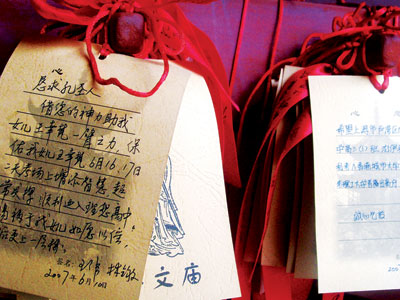All Nonfiction
- Bullying
- Books
- Academic
- Author Interviews
- Celebrity interviews
- College Articles
- College Essays
- Educator of the Year
- Heroes
- Interviews
- Memoir
- Personal Experience
- Sports
- Travel & Culture
All Opinions
- Bullying
- Current Events / Politics
- Discrimination
- Drugs / Alcohol / Smoking
- Entertainment / Celebrities
- Environment
- Love / Relationships
- Movies / Music / TV
- Pop Culture / Trends
- School / College
- Social Issues / Civics
- Spirituality / Religion
- Sports / Hobbies
All Hot Topics
- Bullying
- Community Service
- Environment
- Health
- Letters to the Editor
- Pride & Prejudice
- What Matters
- Back
Summer Guide
- Program Links
- Program Reviews
- Back
College Guide
- College Links
- College Reviews
- College Essays
- College Articles
- Back
Balzac and the Little Chinese Seamstress by Dai Sijie MAG
Dai Sijie’s novel, Balzac and the Little Chinese Seamstress, the story of two intellectually curious boys who are assigned to reeducation through forced labor during the Chinese Cultural Revolution, paints a vivid picture of seeking knowledge in the face of hardship. It asks the reader to consider how important knowledge is, and the ways in which reading can affect the life of a person who is undergoing immense hardships. Sijie proves that knowledge is everything needed to lead one into the light in the midst of stifling darkness.
Western literature changes the lives of Luo and the unnamed narrator, the two protagonists. Sijie describes Western literature as “Tibetan incense, where you only need to say the name, Zang Xiang, to smell the subtle, refined fragrance and to see the joss sticks sweating beads of scented moisture which, in the lamplight, resemble drops of liquid gold.” This demonstrates both the allure of literature on Luo and the narrator, as well as the limitless well of knowledge waiting below the cover of a book.
By reading the banned literature, the protagonists become more civilized and find new meaning to their lives in the mountains. The boys crave knowledge, and through reading Western books they are able to understand their nuanced emotions and the wonderful feeling of love. Literature represents an escape, a means of education, an emotional awakening. As a symbolic element in the book, Western literature provides liberation of the mind and identity to those who are able to wield its power.
The rooster clock also represents the power of knowledge. At first glance, one might argue that a clock merely shows time, but a careful examination of the text supports it as a deeper symbol. The clock itself is a product of advanced technology – something created by civilized people. Despite this, the technologically opposed villagers are under its control. “It was nearly nine o’clock,” writes Sijie, “and at the sight of the rooster dutifully pecking away Luo had a brainstorm: with his little finger he slid the hands of the clock back by one hour. We got back to bed to enjoy our lie-in, which was all the sweeter knowing that the village headman was pacing to and fro outside, puffing on his long bamboo pipe.” This small object regulates the villager’s daily routine. Thus, the whole village is affected by the simple action of sliding the hour hand back.
Sijie also uses the clock to underscore the irony of the protagonists’ situation: Luo and the narrator are supposed to be re-educated to forget their thirst for higher knowledge, yet they actually educate themselves further during this time. This is seen in the way the villagers take to this piece of technology.
In one passage, Sijie shows the narrator reflecting on the village headman by writing, “I was convinced that [the village headman’s] real reason behind his liberal attitude was the irresistible attraction of our alarm clock, with its proud peacock-feathered rooster: our ex-opium grower turned Communist was besotted with it.” Here, the rooster clock symbolizes the power of knowledge. Even though the village headman loathes intellectuals and believes in the supremacy of ignorance and illiteracy, he is subconsciously influenced by this advanced technology. This mirrors the way Luo and the narrator’s thirst for knowledge pushes through their regressive environment and flourishes.
Knowledge is power. This long held adage is shown to be true in Dai Sijie’s Balzac and the Little Chinese Seamstress. Because of knowledge, Luo and the narrator break free of the government’s oppressive propaganda. Sijie ultimately uses Western literature as both a symbol of and a conduit for the protagonists’ education, and the rooster clock as a symbol for both their education and the inevitable knowledge gained by the village. Ultimately, whether desired or not, knowledge changes everyone’s life for the better.

Similar Articles
JOIN THE DISCUSSION
This article has 0 comments.